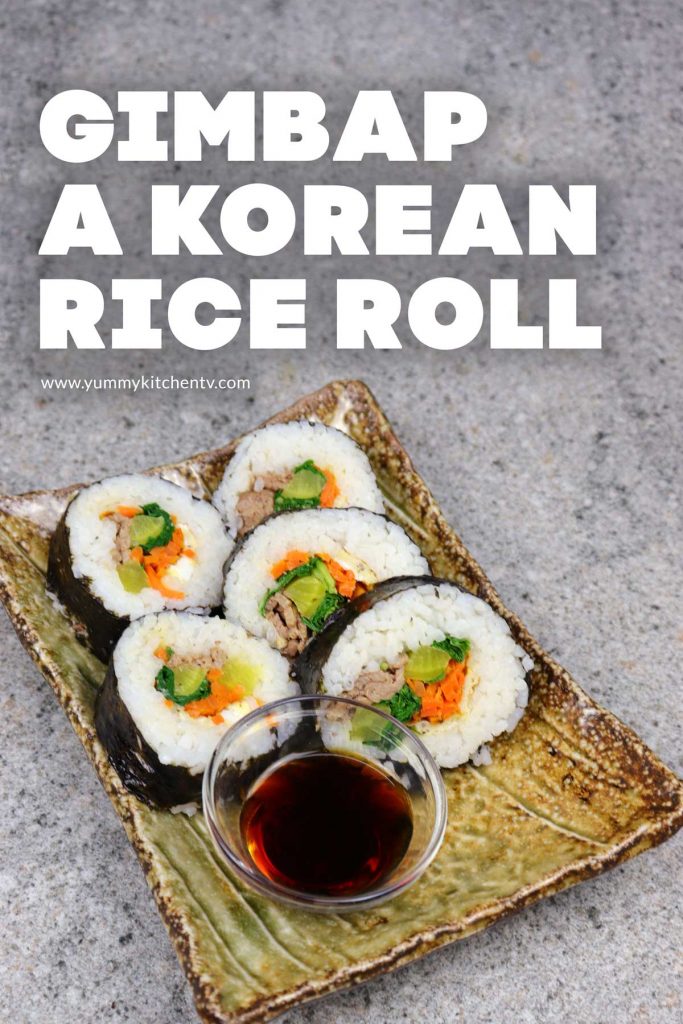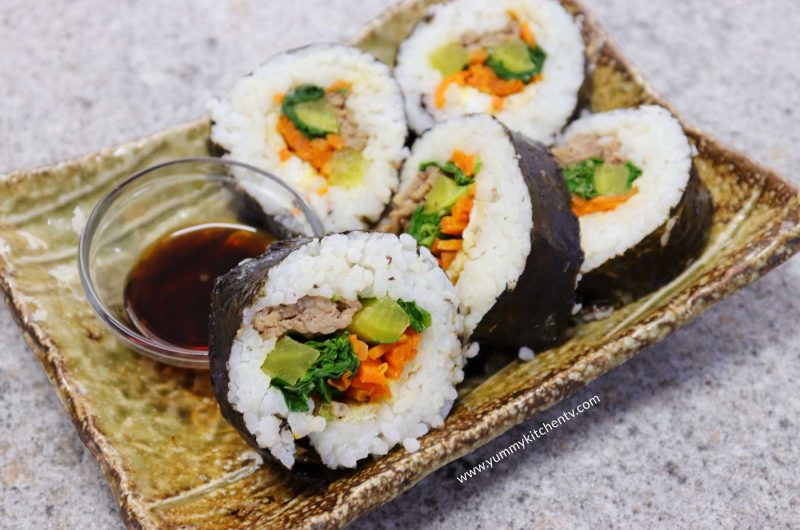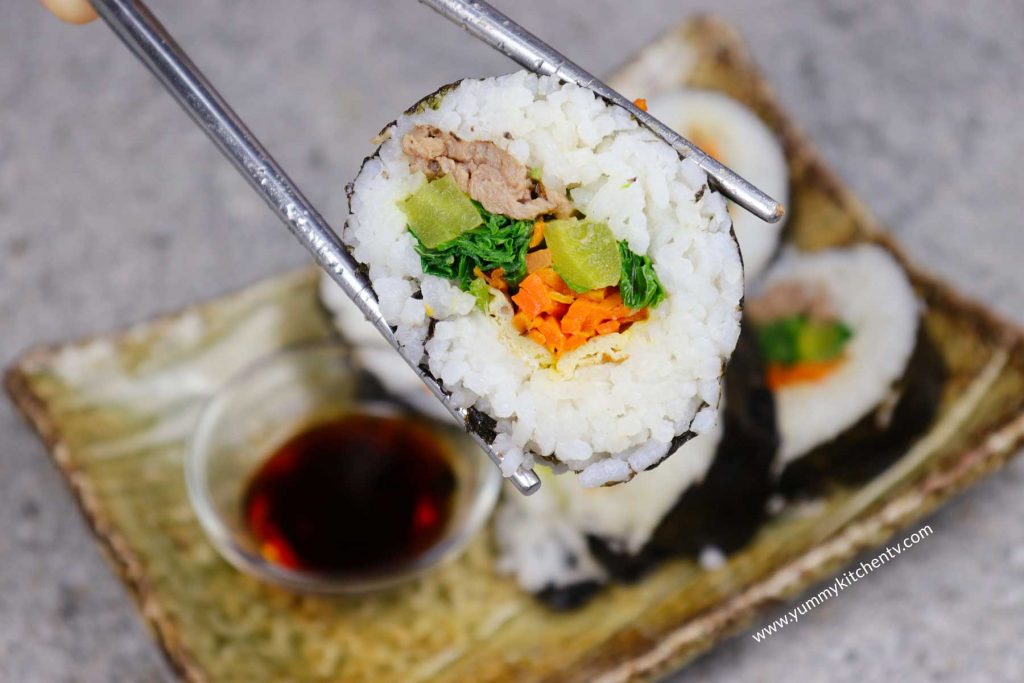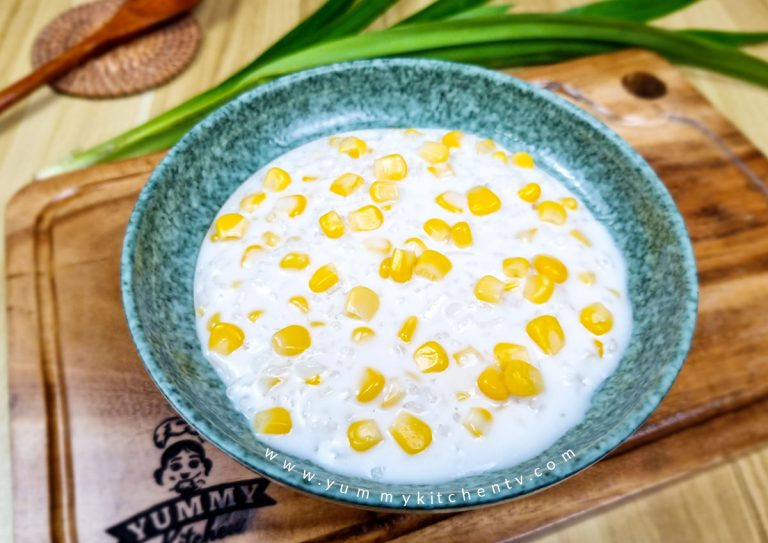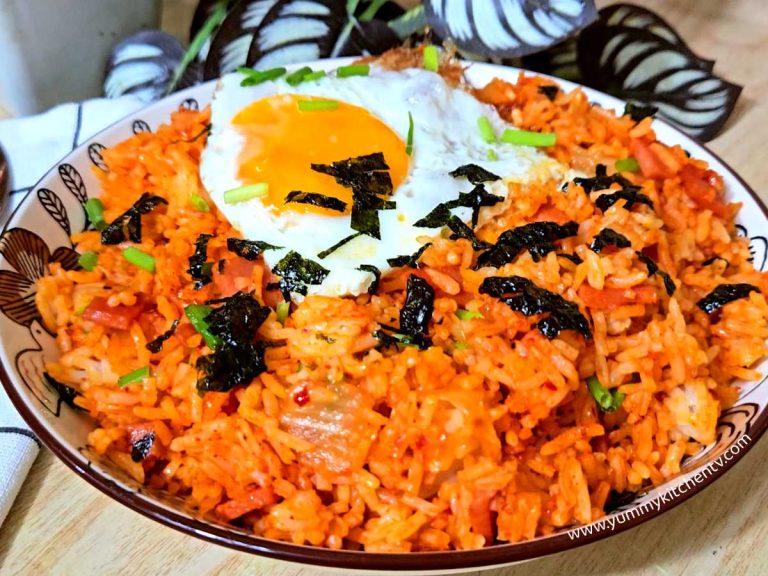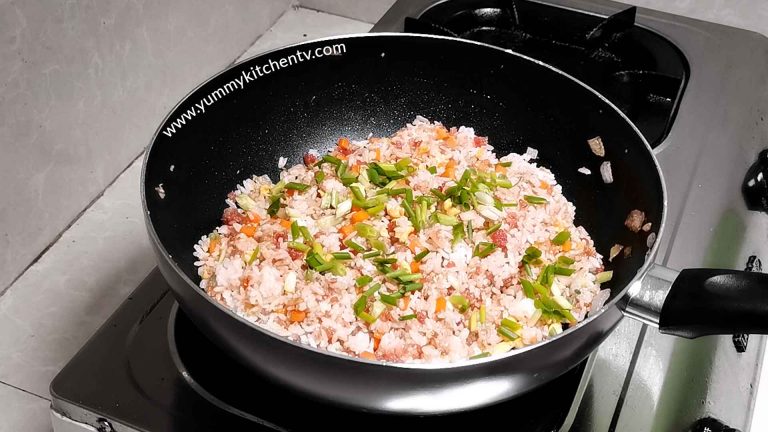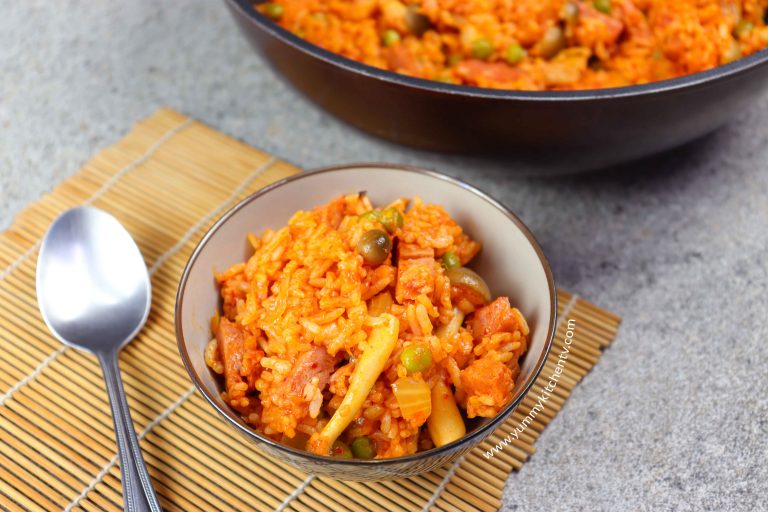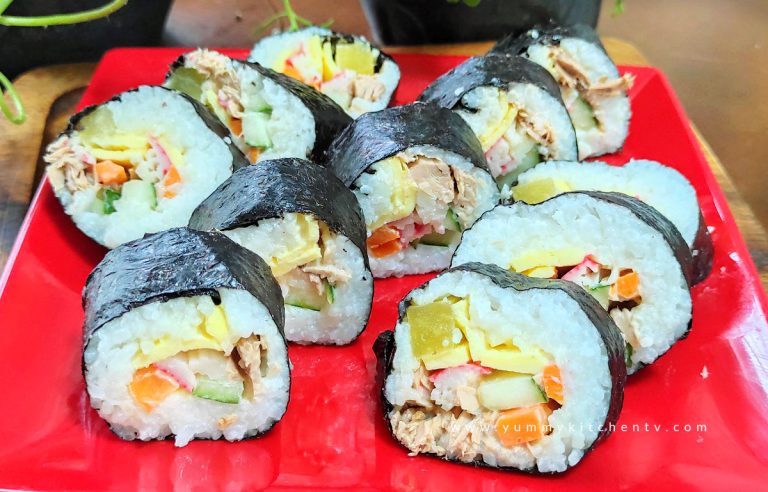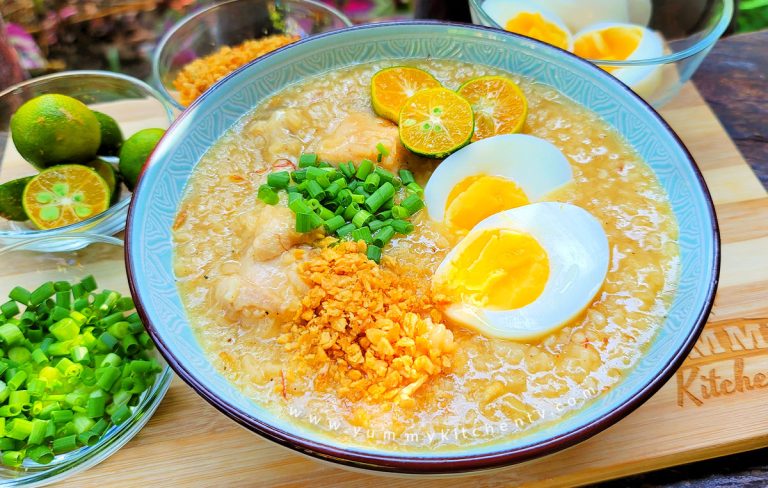Gimbap (Korean Rice roll)
Gimbap (Korean Rice roll) is a filling, meaty version lunch made by cooked white rice, sesame oil, salt, radish, carrot, seaweed seeds, eggs, pepper, spinach, beef strips, soy sauce, mirin, brown sugar and garlic. This delicacy isn’t just eaten because of its aesthetically pleasing look but because of its blend of healthy and convenient side.
Gimbap history
The most well known origin of gimbap lies in Korea. Sources and stories do tell that the Japanese norimaki, which were a dish that was mainly composed of rice with sashimi or picked cucumber added n the middle, rolled in a seaweed sheet. The Norimaki influenced the gimbap during colonial times. But regardless of its origin the gimbap has associated itself to Korean culture and cuisine. The gimbap is usually eaten as part of a packed lunch or meal, or eaten for outdoor events like picnics, and are even seen as a convenience store food in Korea.
‘Gimbap’ was a term used in the 1935, written in a Korean newspaper article during the Japanese occupation in Korea, while they were called Gimbap in certain occasions it was alternatively called Norimaki until the remainder of the Japanese colonization slowly cleared away and they were able to ‘purify’ the Korean Language. There were many theories on how the Gimbap recipe came to be. Aside from the Japanese influence, the Korean cuisine was also influenced by the western food scene. Gimbap being a distinctly Korean dish was flavored with sesame oil which can be associated to many Korean dishes instead of rice vinegar which is commonly used in Japanese rice dishes. As published in the Academy of Korean Studies, there has always been a long established tradition of using rice and easing ‘banchan’ or side dishes in gim. Books written in the 15thcentury reported recipes and of dishes cooked with rice and gim.
What makes a Gimbap (Korean Rice roll)?
Gimbap is essentially a Korean dish made of white rice, vegetables, pickled vegetables, meats like beef, pork, or any cure meats, rolled in a ‘gim’ or a dried seaweed sheet. Sliced into bite sized pieces ready to be served and eaten, or placed in lunch boxes ready to be enjoyed by kids and adults alike!
The basic components of Gimbap (Korean Rice roll) are white short grain rice, meat usually beef strips marinated with soy sauce, pickled radish, eggs, and leafy vegetables mixed with sesame oil all rolled in a dried seaweed that you can coat with a brush of sesame oil to add more flavor are make it glisteningly delectable, or sprinkle with sesame seeds to décor. Nowadays there are a variety of Gimbap to fit the taste of every generation and health requirements. From changing the white rice to brown or black rice, adding cheeses, sometimes even pizza sauces and the like to create a fusion of flavors, meats used can range from pork, luncheon meat, cured meats like ham or imitation crab, canned tuna, hot dogs, fried food, squid, shrimps, fish, or any seafood, or use only vegetables and add cucumber, carrots, burdock root, or ‘kkaennip or perilla leaves for a vegan option. There are a multitude of variety of Gimbap that some are even made fried to suit people who love fried food, Samgak-gimbap’ which is a triang gimbap similar to the Japanese onigiri, ‘Nude gimbap’ which is just gimbap but with the rice as the outer layer instead of the usual seaweed sheet, usually served with sauce or cheese. There are just so much falvors you can experiment with that makes the gimbap a really interesting and fun dish!
Try out this bite sized flavor explosion of a dish that not only filling but really healthy and versatile to suit your tastes!
Gimbap recipe (tagalog)
Sahog
- 2 tasang lutong kanin
- 1 kutsarang sesame oil
- 1 kutsaritang asin
- 6 – 8 picked yellow radishes
- 1 karot (hiniwa)
- 3 4 seaweed sheets
Egg mix
- 2 itlog
- isang kurot ng asin
- isang kurot ng paminta
Spinach
- 2 – 3 tasa kangkong
- 1 kutsaritang sesame oil
- asin at paminta pang lasa
Beef strips
- 500 gramo beef strips
- 1 – 2 kutsarang soy sauce
- ½ kutsarang mirin
- ½ kutsarang kayumangging asukal
- ½ kutsarang sesame oil
- 1 kutsarang bawang (tinadtadd)
Paano lutuin
- Ihanda ang mga kailangn iprito; para sa mga itlog, ihalo ang itlog, asin, at paminta at itabli. Imarinate ang baka ng soy sauce, mirin, asukal, sesame oil, at bawang, haluin ng mabuti at itabi.
- Sa kawali na may katamtamang init, lagyan ng mantika at iluto ang mga karot ng 3 o 5 minuto, tangalin. Dagdagin ulit ang kawali ng mantika at lutin ang itlog hanggang pwede na iflip, pagnaflip na lutuin ulit hangang magkayumanggi konti ang itlog, itabi. Hatiin ng pahaba.
- Para sa baka, sa parehong kawali dagdagan ng mantika at lutuin ang baka hangang magiba ng kulay. Itabi.
- Sa palayok na may kumukulong tubig, ilagay ang kangkong at lutuin ito ng 2 – 3 minuto. Salain at haluin ang kangkong ng sesame oil asin, at paminta. Tikman para malaman kung kailangan pang dagdagan ng asin at paminta ito.
- Para sa kanin, haluan ito ng asin at sesame oil.
- Para iayos ito, takpan ang sushi mat ng cling wrap, ilugar ang nori sheet sa itaas, pahidin ng manipis na pantig ng kanin, iwanan ang 1 pulgada sa itaas, dagdagan ng 2 hinating itlog, karot, kangkong, pickled radish, at baka.
- Irolyo ito habang hinihila ang mat. Siguraduhing maypagkadiin ito habang rinorolyo. Hatiin at ihanda kasama ang soy sauce.


